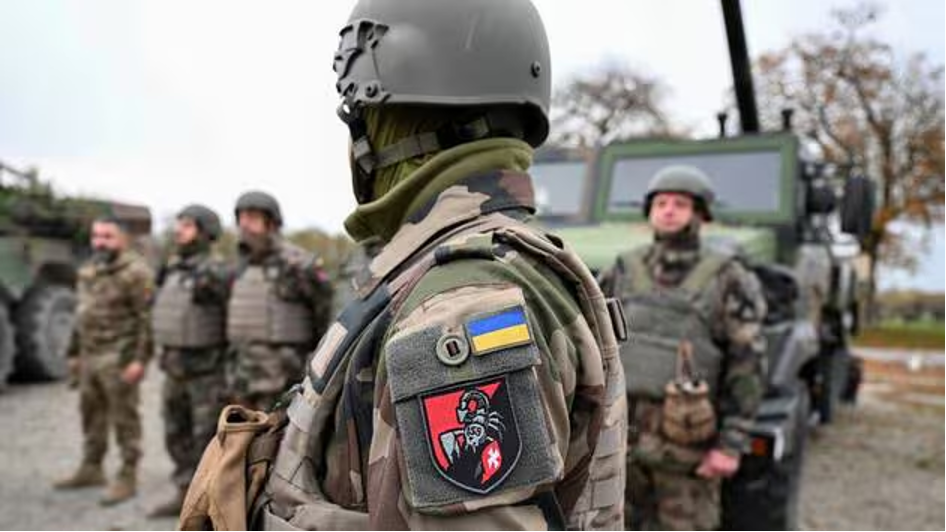A video, posted on the Facebook page of Ukraine’s Western Air Command on Sunday, showed Natalia Hrabarchuk, a former kindergarten teacher now a volunteer member of the command’s air defense forces, using a 9K38 Igla (NATO: SA-18 Grouse) Man-portable air defense system (MANPADS) launcher to bring down an incoming Russian cruise missile.
On the morning of Sunday, Nov. 17 Russian forces launched a massive 120-missile and 90-Shahed attack drone assault on Ukraine, one of the largest since the 2022 full-scale invasion according to President Volodymyr Zelensky.
JOIN US ON TELEGRAM
Follow our coverage of the war on the @Kyivpost_official.
The Ukraine Air Force reported it had shot down 102 of just about every type of missile Moscow has in its inventory along with 42 drones with another 41 “lost” – which is generally interpreted as meaning they were disrupted by electronic warfare systems.
Of those shoot downs, the Western Air Command claimed its forces had hit 31 missiles and one Shahed; with one of those missiles being the Kh-101 (NATO: AS-23 Kodiak) engaged by Hrabarchuk.
The Facebook video shows the former teacher standing on the flat roof of a building in an unidentified location with the Soviet-made MANPADS on her shoulder. She takes aim at a distant target then, after tracking the incoming target, she fires, and both she and the video briefly track the missile in flight.
Hrabarchuk kneels and places the missile launcher on the ground as if praying for a successful hit. A voice from behind the camera can be heard saying, “Hit it, hit it, Natasha, hit it.” The sound of a loud explosion in the distance shows that she has made the one-in-a-million shot, the look of disbelief on her face underlines just what she has achieved.

Ukraine is Getting Its Own Capability to Strike Deep into Russian Territory
In civilian life, Hrabarchuk was a preschool teacher before volunteering to become an artillery gunner in the anti-aircraft missile unit of the “Halych-Volyn” radio-technical brigade of the Western Air Command.
This was her first combat launch but its triumph was down to more than five months of intensive training she had undergone on the full range of portable anti-aircraft missiles held by Ukrainian forces which, in her words, included “hundreds” of training launches on simulators.
Hrabarchuk said of the shoot, “When the enemy missile came into the impact zone, I had to throw aside all emotions and feelings of excitement.”
She went on to say that she fell back on all she had learned during her rigorous training but even so, she added, “It wasn’t easy - to shoot down a winged missile. My launcher weighs about 18 kilograms (40 pounds) with the weight of responsibility to get a good result.
“I am so happy to have been able to do this. Only then could I give freedom to my emotions a little. There are several female members in our mobile fire group and, I assure you, all of us give everything we can to protect our native land from air strikes.”
By any measure this successful downing of the Kh-101 by the Igla, which was developed more than 40 years ago, albeit having undergone several upgrades to enhance its sensors and its resistance to countermeasures, was remarkable. The Igla uses an infrared homing head to zero in on the heat emitted by the exhaust gases of its target.
The air-launched Kh-101 subsonic cruise missile was designed in the 1990s and entered service in the 2010s. It is a highly sophisticated and advanced weapon designed for strategic strikes using a 400 kilogram (880 pound) high-explosive, penetrating, or cluster warhead with a range of around 3,500 kilometers (2,175 miles). The Tu-95MS strategic bomber, from which the missiles used in Sunday’s attacks were launched can carry eight of the weapons on under-wing pylons.
During its cruise phase the missile flies at around 10,000 meters (32,000 feet) which would be beyond the normal operating altitude of the Igla, which is around 3,500 meters (11,000 feet). It seems likely the Kh-101 must have been in its terminal phase as it neared its intended target. Even so it has a fairly low-level heat signature which would have tested the ability of the Igla to acquire it.
Hrabarchuk undoubtedly showed great skill in achieving the hit, but a number of factors also contributed to the success of her mission – and it wasn’t the only time it has happened. As Kyiv Post previously reported a National Guard trooper also brought down a Kh-101, using an Igla, in May 2023 near Bucha in the Kyiv region - when once again all the elements aligned in his favor.
You can also highlight the text and press Ctrl + Enter






